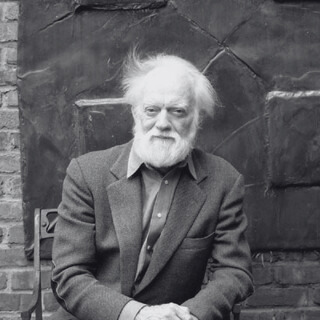© 2024 Waterline Art. All Rights Reserved.Terms & ConditionsPrivacy Policy
© 2023 Waterline Art. All Rights Reserved.Terms & ConditionsPrivacy Policy

Paul Jenkins (1923-2012)
Paul Jenkins was born in Kansas City in 1923. During his teenage years, he moved to Ohio to with his mother and stepfather, who both ran the local newspaper. After graduating from high school, he served in the U.S. Maritime Service and entered the U.S. Naval Air Corps during World War II. Following the war, he moved to New York and like so many of his generation, availed himself of the benefits offered through the G.I. Bill. He studied at the Art Students League with Yasuo Kuniyoshi and Morris Kantor, where he met the likes of Mark Rothko, Jackson Pollock, Lee Krasner, and Barnett Newman.
In 1953, he left for Europe, ultimately settling in Paris. From 1955, Jenkins split his time between New York and Paris, owing to his very rapid ascent and commercial success. In 1954, he received his first solo exhibitions in both Europe and the U.S. - Studio Paul Facchetti on the Rue de Lille in Paris, and the vanguard modern art gallery of Zoe Dusanne in Seattle. Two years later, his first solo show in New York was held at the taste-making Martha Jackson Gallery. The Whitney Museum purchased the painting Divining Rod from this exhibition.
Beginning in the 1960s and lasting for the duration of his career, Jenkins' work was shown at major galleries and museums worldwide. In 1963, he took over Willem de Kooning's light-infused loft at Union Square in New York where he practiced for nearly 40 years. In 1964, he traveled to Tokyo for his exhibition at the Tokyo Gallery and began to study and work with members of the Gutai in Osaka.
Jenkins' legacy as a pioneer of the "stain painting" technique employed by other Color Field artists, most notably Helen Frankenthaler, has firmly secured his place in the pantheon of post-war masters. Instantly recognizable, his paintings are characterized by the precise pours and multi-layered washes of pigment that converge on the canvas to form bright, saturated compositions that often include most of the primary and derivative colors visible on the spectrum. While the artist’s work was initially received within the greater context of post-war Abstract Expressionism, his exploration into the physiological and spiritual aspects of color, what he termed its “phenomena,” created a path both through and beyond numerous artistic movements that arose in the latter half of the twentieth century and into the new millennium.
Paul Jenkins passed away on June 9, 2012, in New York. Over the course of his more than six-decade career, he exhibited and placed works with the most esteemed museums, galleries, and collectors around the world. His work can be found in the Brooklyn Museum, Hirshhorn Museum and Sculpture Gardens at the Smithsonian Institution, Musée national d’art moderne, Paris, Museum of Fine Arts, Boston, Museum of Modern Art (MoMA), New York, National Gallery of Art, Washington, National Museum of Art, Osaka, Japan, Philadelphia Museum of Art, San Francisco Museum of Art, Solomon R. Guggenheim Museum, Stedelijk Museum, Tate Modern, Victoria and Albert Museum, Whitney Museum of American Art, and many more.
Sources: The Paul and Suzanne Jenkins Foundation, Timothy Taylor Gallery, and various sources accessed via Wikipedia.